BUDDHISM
The man who would become known as the Buddha was born in Nepal. However, he spent much of his life in India, became enlightened in India, and the practice of Buddhism emerged from India. The Buddha also died in India. We visited some of the places that were important to the Buddha and remain significant to Buddhists today.
The Buddha was born a Nepali prince. Siddhartha Gautama was born in Lumbini, Nepal in 566 BC, and he was the prince of the kingdom of Kapilavastu.
Siddhartha’s early life was one of luxury. He had three palaces built especially for him. To spare the prince emotional upset, his father, King Suddhodana, shielded the prince from worldly aspects of life such as human suffering.
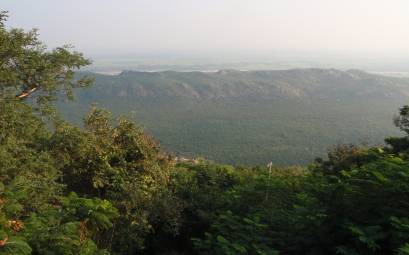
Griddhakuta Hill near Ragjir
When sixteen years old, Siddhartha had an arranged marriage to a cousin, Yasodhara, and they had one son, Rahula. Although Siddhartha had a family and all the material wealth that he could want, he believed that material wealth should not be the ultimate goal in life.
When twenty nine years old, Siddhartha wanted to meet his subjects. His father tried to remove the sick, aged, and suffering from public view, but his efforts were incomplete. Siddhartha saw age, illness, and death, and he was deeply moved by it.
Siddhartha escaped the palace and left his princely life behind when 30 years old. He chose the life of an ascetic.
Siddhartha traveled around the plains of the Ganges, but he did not find the answers he was seeking. He and five companions chose to go further with their asceticism, and they chose fasting and self-mortification. It nearly killed Siddhartha, and he still had not found the answers he was seeking.
Siddhartha chose a more moderate path that included some nourishment, and he began practicing meditation. He sat under a tree at Bodh Gaya to meditate, and he remained there for 49 days until attaining enlightenment. Thereafter he was known as the Buddha – or enlightened one.
Buddha’s enlightenment was in the form of ‘Four Noble Truths’. They are that 1) suffering is an inherent part of existence, 2) the origin of suffering is ignorance, 3) the main symptoms of that ignorance are attachment and craving, and 4) that attachment and craving can be conquered by following the ‘Eightfold Path of Righteousness’. That path includes right thought, understanding, speech, action, livelihood, effort, concentration, and contemplation. The Buddha disdained asceticism, rituals, castes, and class distinctions.
Buddha traveled to Sarnath, near Varanassi, in India and met with his five prior companions. There he delivered his first sermon since his enlightenment. His followers grew to hundreds, and they were dispatched to spread his word. Buddhism was born.
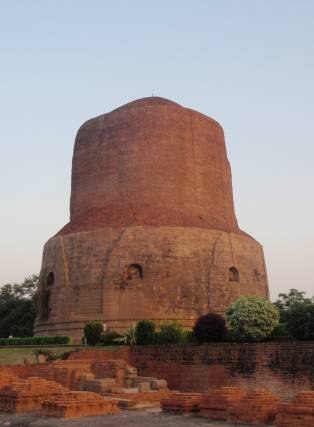
Dhamekh Stupa in Sarnath
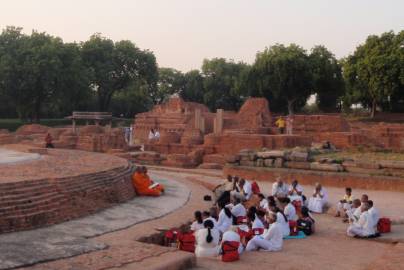
Buddhists amid ruins at Sarnath
Buddhism in India had wide appeal due to its openness to all regardless of caste or gender. It further appealed due to its lack of requiring sacrifice – especially for those whom had so little.
The Buddha died at Kushinagar in 486 BC. There are conflicting stories of the cause of his death.
Meanwhile, the first empire in India was formed in 321 BC by Chandragupta Maurya – an invader of unknown origin. Chandragupta’s grandson, Ashoka (269-232 BC), became a great ruler and significantly expanded the empire. However, following a bloody battle in Kalinga, Ashoka renounced violence and became a Buddhist. Ashoka encouraged his subjects to respect others’ religions, give liberally to charity, and avoid killing animals. He also built many stupas enshrining Buddhist relics.
After Ashoka, the Mauryan Empire soon declined. However, Buddhism remained the predominant religion throughout India until the 6th century AD.
During the 6th to 7th centuries, some described Buddha as a manifestation of Vishnu, the Hindu god, and many Buddhists were absorbed in to Hinduism. Although there are relatively few Buddhists living in India today (as compared to Hindus or Muslims), many Buddhists from around the world make a pilgrimage to India to visit the historic Buddhist sites in India.
We visited sites that were relevant during Buddha’s lifetime – nearly 2500 years ago. We also visited both ancient and contemporary sites that are relevant to Buddhists today.
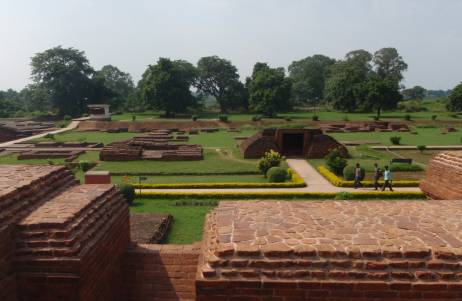
Ruins of Nalanda University
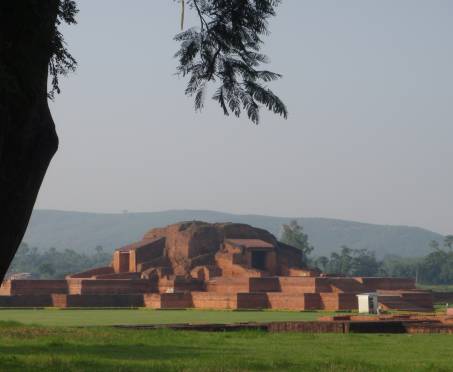
Ruins of Vikramshila University
We tried to visit Bodh Gaya where Buddha attained enlightenment, but alas, we were stopped by another political roadblock. Not to be dissuaded, we detoured to Rajgir. This is the site of Griddhakuta Hill where Buddha spent much time in two rock caves. This was also the site of two of his best known sermons.
We went to Sarnath which was the site of Buddha’s first sermon in 528 BC. At that time, Sarnath was one of India’s great centers of learning; however, the ruins at Sarnath date to the 5th century AD. The central monument, Dhamekh Stupa, is where Buddha is believed to have delivered his sermon to his five original disciples. There are also remains of another stupa, several monasteries, and temples.
We went to the Buddhist University of Nalanda which was built in the 5th century AD. Nalanda is a site where the Buddha had often stayed, and the university built there was once the most prestigious center of learning in Asia. It had more than 5,000 students and teachers, and its library contained nine million manuscripts. The university was looted and destroyed in 1199 by the Turkish raider, Bakhatiar Khalji.
We went to Antichak which is the site of Vikramshila University which was built in the late 8th or early 9th century. This was considered the more ‘elite’ of the Buddhist universities, and those admitted were scholars of high distinction. The university operated until the 13th century.
Today, relatively few Buddhists live in India. There is, however, a large number of Buddhists that travel to and through India on pilgrimage to these and other ancient sites.
Follow us as we look at the Islamic empire in India or return to our land travel page.
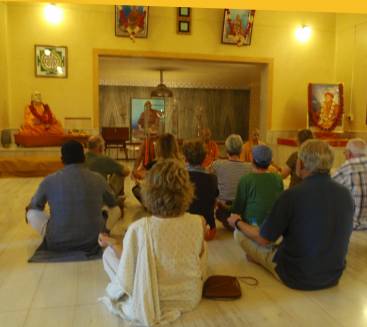
Bihar school of yoga